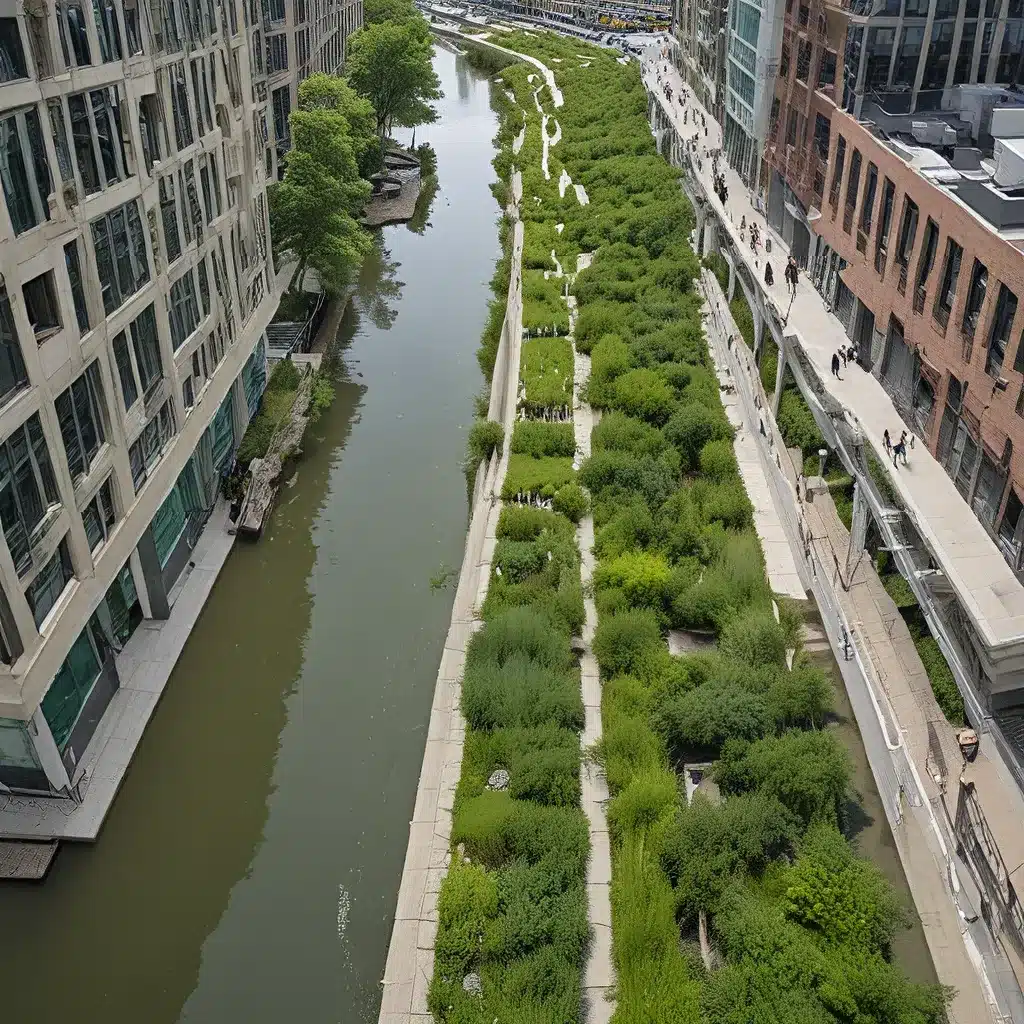
As someone who cares deeply about the health of our planet and the well-being of our communities, I’ve been fascinated by the growing trend of green infrastructure. It’s not just about making our cities look prettier – this innovative approach to urban planning and development can have a profound impact on our water management and overall resilience in the face of climate change.
Let me tell you, I used to think of infrastructure as these drab, concrete-heavy systems that were just necessary evils. But then I started learning about how green infrastructure can actually be a game-changer. I mean, just imagine a world where our cities don’t just rely on those traditional “gray” pipes and drainage systems, but instead incorporate nature-based solutions that provide a whole host of benefits.
Harnessing the Power of Nature
One of the key things that drew me in was how green infrastructure taps into the power of nature to manage stormwater. As I was researching this, I came across some eye-opening stats from the U.S. Environmental Protection Agency. Did you know that green infrastructure can actually reduce and treat stormwater at its source, all while delivering other environmental, social, and economic benefits?
I was particularly struck by how it can help mitigate flooding. Conventional stormwater infrastructure, with its focus on quickly draining water away, can actually increase peak flows and flood risk. But green infrastructure, like permeable pavements and vegetated swales, can slow down and reduce those stormwater discharges, making our cities more resilient.
And it’s not just about flood control – green infrastructure can also improve water quality by reducing the amount of pollutants, like pathogens, nutrients, and heavy metals, that end up in our streams, lakes, and beaches. That’s a win-win for the environment and public health.
Transforming Urban Spaces
But the benefits of green infrastructure go far beyond just water management. As I learned more, I started to see how it can truly transform the urban landscape in amazing ways. Imagine a city that’s not just a concrete jungle, but one that’s dotted with parks, green roofs, and urban forests.
These green spaces don’t just look beautiful – they can also provide crucial habitat for urban wildlife, creating vital connections between habitats and supporting biodiversity. And for us humans, they offer invaluable recreational areas that encourage physical activity and improve mental well-being. I mean, who wouldn’t want to have a serene, tree-lined oasis right in the heart of their bustling city?
What’s more, green infrastructure can actually increase property values and promote economic growth. By incorporating these natural elements into development projects, builders and developers can create more desirable, livable spaces that people are willing to invest in. It’s a win-win for everyone involved.
Cultivating Collaboration for Water Security
As I dove deeper into this topic, I realized that the true power of green infrastructure comes from the way it fosters collaboration between different stakeholders. It’s not just about the developers or the city planners – it’s about utilities, property owners, and the wider community all working together to create sustainable, resilient urban environments.
Take the example I came across of Aquarevo, a partnership between a water utility and a property developer in Australia. By working together, they were able to design and implement an integrated water management strategy that optimizes the use of drinking water, recycled water, and rainwater. This approach not only reduces freshwater extraction, but also mitigates the impact of urban development on the natural water cycle.
It’s this kind of collaborative, systems-level thinking that’s going to be crucial as we tackle the challenges of climate change and urbanization. And green infrastructure is at the heart of it all, providing a framework for diverse stakeholders to come together and create more sustainable, resilient communities.
Embracing the Future of Urban Resilience
As I reflect on all that I’ve learned about green infrastructure, I can’t help but feel inspired by the possibilities. This isn’t just about retrofitting our existing cities – it’s about rethinking the way we design and develop urban spaces from the ground up.
Just imagine a future where every new building incorporates cutting-edge water conservation technologies, from low-flow fixtures to advanced rainwater harvesting systems. Where parks and green roofs aren’t just nice-to-haves, but essential components of a holistic approach to urban water management and climate resilience.
And of course, this future isn’t just a pipe dream – it’s already starting to take shape in cities around the world. From water harvesting projects to innovative public spaces, the seeds of this green infrastructure revolution are being planted, and it’s up to all of us to help nurture and grow them.
So, my friends, I invite you to join me on this journey towards a more sustainable, resilient future. Let’s explore how we can integrate green infrastructure into our own communities, working hand-in-hand with utilities, developers, and local leaders to create the kinds of urban environments that we all deserve. After all, the health of our planet and the well-being of our cities are inextricably linked, and by embracing the power of nature-based solutions, we can help secure a brighter, greener tomorrow.


